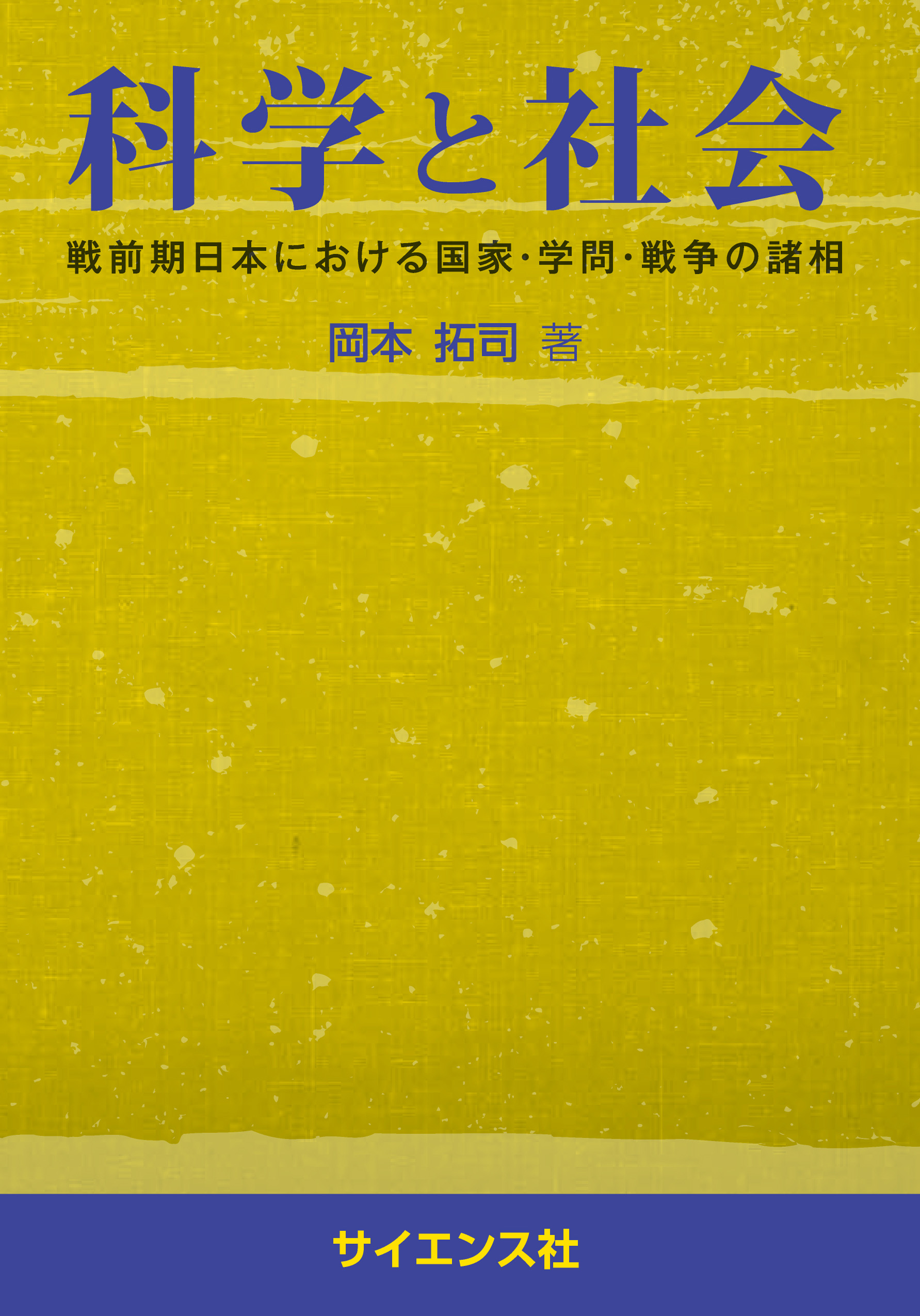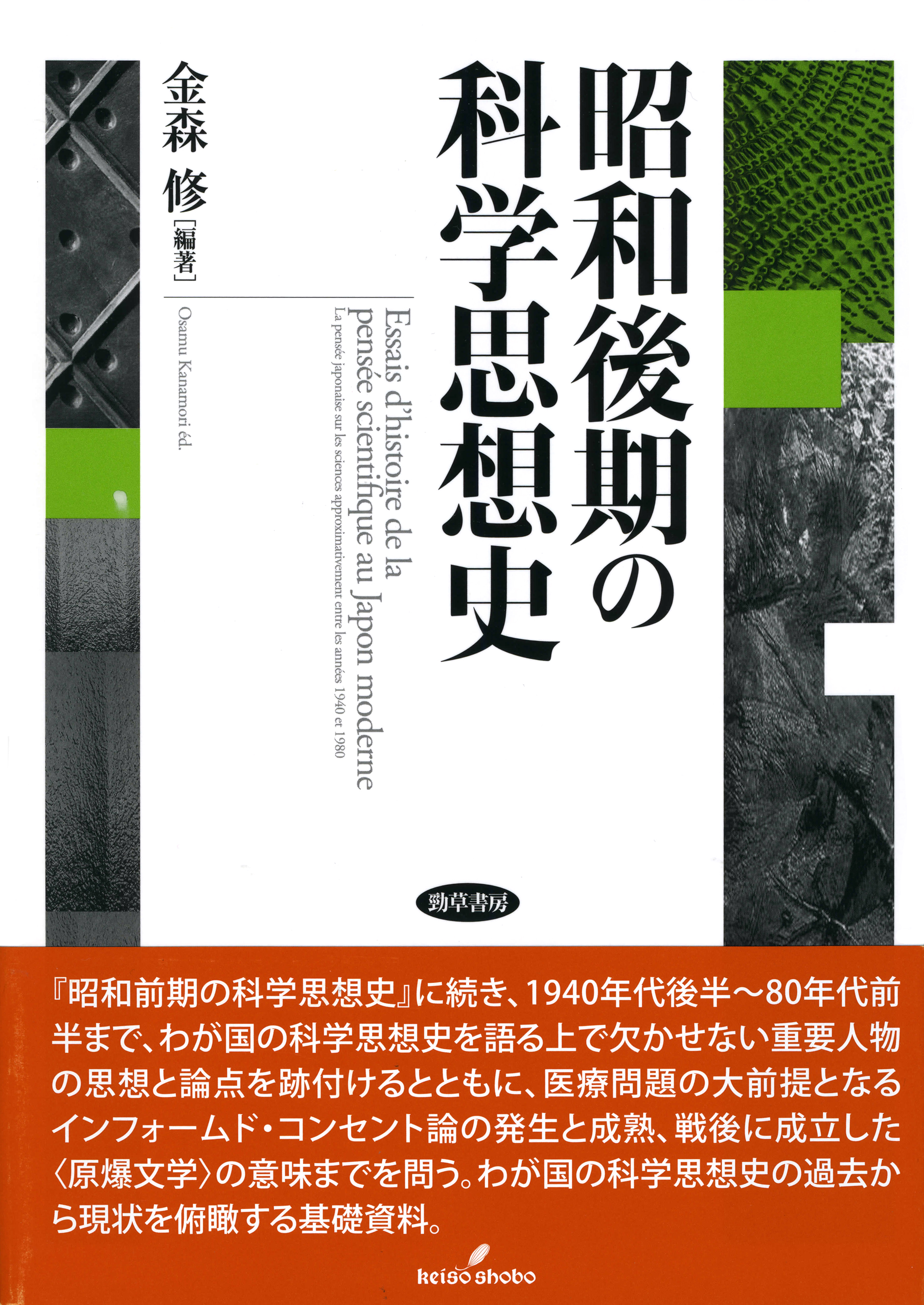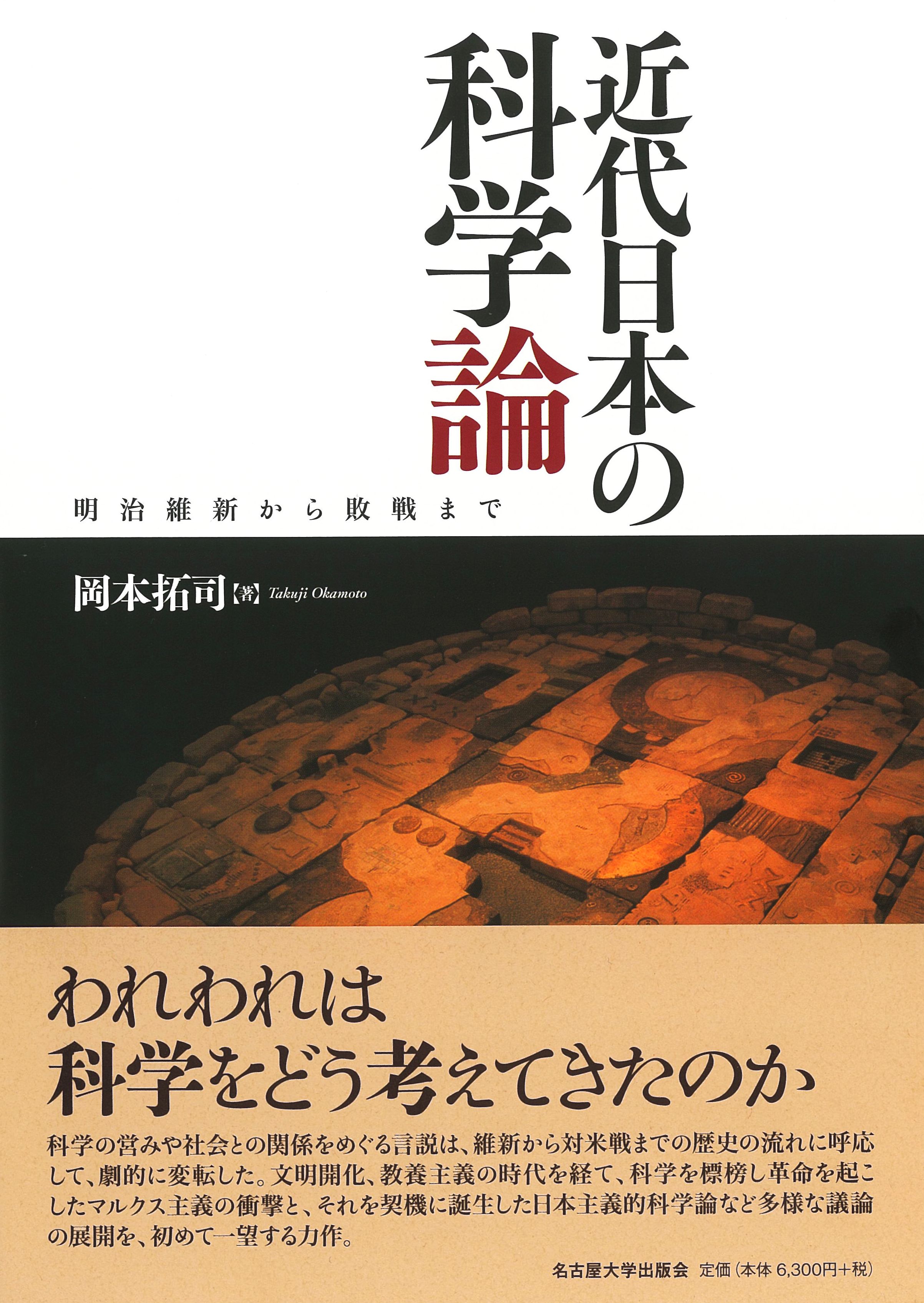
Title
Kagaku to Shakai: Senzenki Nippon ni okeru Kokka, Gakumon, Senso no Shoso (Science and Society: Multiple Aspects of the State, Learning, and War in Prewar Japan)
Size
256 pages, A5 format
Language
Japanese
Released
September 25, 2014
ISBN
978-4-7819-1345-2
Published by
Saiensu’sha Co., Ltd.
Book Info
See Book Availability at Library
Japanese Page
Certain topics covered in courses for freshmen and sophomores on the history of science, or science and technology studies, deserve further academic, historical research. This book is a collection of the results of such research, especially on the history of science in prewar Japan, which has been relatively unexplored so far.
I arranged the chapters mostly in chronological order. The first chapter deals with the birth and development of science that took place outside Japan. Though the contemporary philosophy and history of science has failed to answer the question of what science is, I dared to present my own answer by reframing the question. I tried to use this question and answer in a way that makes them useful in describing the history of science. Since most Japanese in the 1860s regarded science as part of Western learning, I describe Japan’s reception of science as one aspect of a more general phenomenon, namely, the acceptance of Western culture in Japan. I do not depict the reception of science in Japan as a natural, smooth process without serious obstacles, although some current Japanese scientists wish to see it that way.
I consider various historical figures and topics: Katsusaburo Yamagiwa (1863-1930), who created the first artificial cancer by putting tar on the ears of rabbits; Genichi Kato (1890-1979), who succeeded in extracting single nerve cells for his physiological experiments; the topic of beriberi, a widespread disease in Meiji Japan that the doctors in Tokyo Imperial University and the Army actually helped propagate, albeit unintentionally; and the electricity theft that troubled not only electrical engineers but also jurists and physicists just before the Russo-Japanese War.
Meanwhile, I pay special attention to the relatively unknown physicist Shunkichi Kimura (1866-1938), since by following his life the reader can grasp the political and cultural milieus surrounding science and scientists in Meiji Japan. After graduating from Imperial University, Kimura started working for the First Higher Middle School. He invited his Christian friend Kanzo Uchimura to his school, but was forced to quit his job shortly after Uchimura was fired for his blasphemy case in 1891. Kimura then went to the United States and earned his PhD under the auspices of the famous American physicist Josiah Willard Gibbs. Kimura’s best-known accomplishment was the development of wireless telegraphy for the Japanese Navy before and during the Russo-Japanese War, which contributed to Japan’s victory at the Battle of Tsushima. Kimura’s life thus shows how a scientist was urged to make his (very rarely “her”) own difficult decisions to strike political, cultural, and sometimes religious balances.
As the description of Kimura’s activities shows, I spend several chapters addressing topics connected with the relationship between science and war. Among them, the last chapter tries to answer the question of what made Japan decide to accept the Potsdam Declaration in August 1945—was it the atomic bombs, the Soviet Union’s entry into the war against Japan, or something else? In another chapter, I analyze relatively unknown activities and discourses of Japanese scientists during and after WWI.
(Written by OKAMOTO Takuji, Associate Professor, Graduate School of Arts and Sciences / 2017)



 Find a book
Find a book



